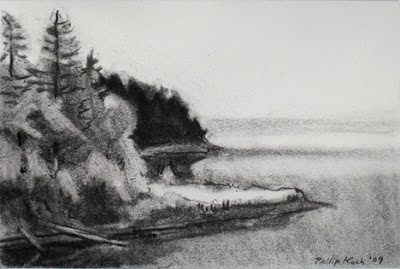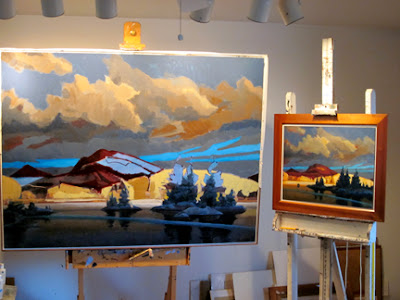The Excitement of Jean Michel Basquiat

A few years ago I attended a talk given by a leading figure at one of New York's most prominent auction houses. It was sponsored by the Baltimore Museum of Art which had asked him to come down and speak about the comtemporary art market. He had a lot of Jean Michel Basquiate paintings coming up at his next auction, so he naturally included that artist's work in his talk. When he came to the Basquiats he commented to the audience "My hedge fund managers really eat up the Basquiats." Proabably so. Basquiat was a young artist who fell in with Andy Warhol and managed for a few years to get into the headlines. Then a heroin overdose took him. Below are two paintings by earlier artists, George Inness and Caspar David Friedrich, two 19th century landscape painters. What do they have in common with Basquiat? At first glance, not much. Well, beyond all the paintings being made with paint, they share a few other traits. All three place dramatic large dark shapes against...









